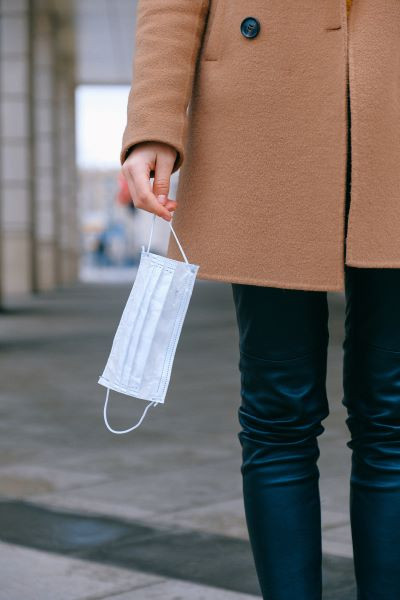
Masks: Towards A Circular Economy
20th Oct 2020
Face masks are part of our daily lives during the pandemic. Many are made from plastics and designed to be used just once, which means thousands of tonnes of extra waste going to landfill. Masks may help stop the spread of coronavirus but if everyone in Australia used a single-use mask every day for a year, it would create 25,000 tonnes of contaminated waste and 22,000 tonnes of plastic packaging. Masks may also be a source of harmful microplastic fibres on land and in waterways and litter.

Designing for a Healthier Environment
Face masks are a major potential source of waste. We need to work out how to stay healthy and sustainable. It’s important to note that any attempt to redesign face masks must ensure they offer adequate protection to the wearer. Where masks are used in a medical setting, design changes must also meet official standards such as barrier efficiency, breathing capacity and fire resistance. With this in mind, reducing the environmental harm caused by masks could be done in several ways.
-
Design with more reusable parts
Evidence suggests reusable cloth masks perform almost as well as single-use masks, but without the associated waste. One lifecycle assessment conducted in the UK found masks that could be washed and reused were the best option for the environment. Reusable masks with replaceable filters were the second-best option. The study also found having a higher number of masks in rotation to allow for machine washing was better for the environment than manual washing.
-
Make masks easier to dispose of or recycle
In high-risk settings such as hospitals and clinics, the reuse of masks may not be possible or desirable, meaning they must be disposed of. In medical settings, there are systems in place for disposal of such protective gear, which usually involves segregation and incineration. But the general public must dispose of masks themselves. Because masks usually comprise different materials, this can be complicated. For example, recovering the components of a N95 mask for recycling would involve putting the straps, nose foam, filter and valve in one bin and the metal staples and nose clip in another – and some recyclers may see mask recycling as a health risk. These difficulties mean masks often end up in landfill. Masks would be easier to recycle if they were made of fewer materials and were easy to disassemble.
-
Use biodegradable materials
For single-use items, placing synthetics with biodegradable materials (our favourites) would be the first step in circular design thinking. The abaca plant, a relative of the banana tree, offers one potential option. Its leaf fibre reportedly repels water better than traditional face masks, is as strong as polymer and decomposes within two months. Most abaca is currently produced in the Philippines. The road to a circular economy will be a long one - and COVID-19 will be just one challenge along the way. But we need to achieve it, for the good of the planet and humankind.
Information taken from Smart Company. Read about having a sustainable Christmas, and International E-Waste Day, on our blog.
Planet Friendly Packaging acknowledges the traditional custodians of the land on which we work. Our thoughts go out to everyone affected by COVID-19. Stay safe.

